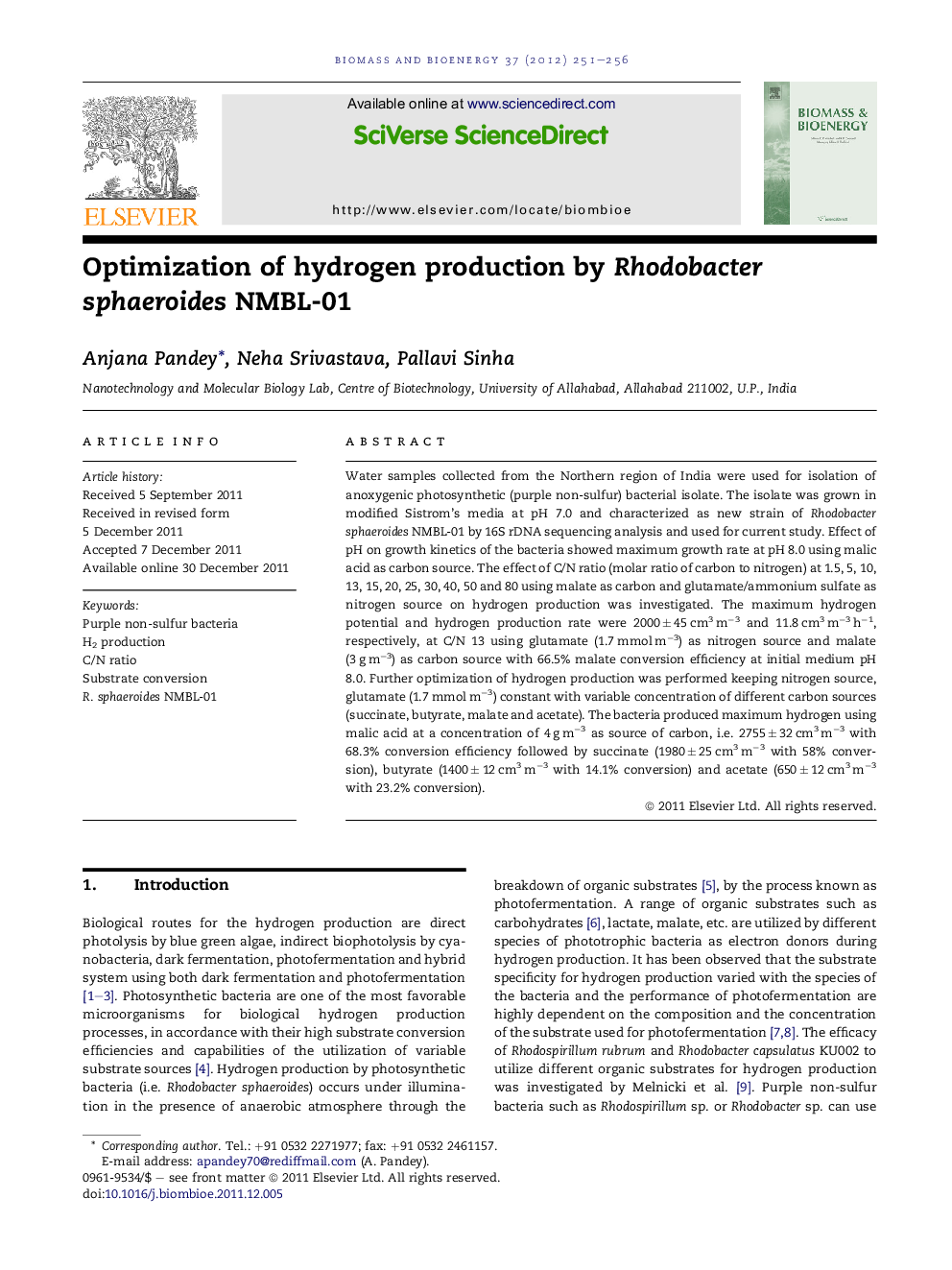| Article ID | Journal | Published Year | Pages | File Type |
|---|---|---|---|---|
| 677617 | Biomass and Bioenergy | 2012 | 6 Pages |
Water samples collected from the Northern region of India were used for isolation of anoxygenic photosynthetic (purple non-sulfur) bacterial isolate. The isolate was grown in modified Sistrom’s media at pH 7.0 and characterized as new strain of Rhodobacter sphaeroides NMBL-01 by 16S rDNA sequencing analysis and used for current study. Effect of pH on growth kinetics of the bacteria showed maximum growth rate at pH 8.0 using malic acid as carbon source. The effect of C/N ratio (molar ratio of carbon to nitrogen) at 1.5, 5, 10, 13, 15, 20, 25, 30, 40, 50 and 80 using malate as carbon and glutamate/ammonium sulfate as nitrogen source on hydrogen production was investigated. The maximum hydrogen potential and hydrogen production rate were 2000 ± 45 cm3 m−3 and 11.8 cm3 m−3 h−1, respectively, at C/N 13 using glutamate (1.7 mmol m−3) as nitrogen source and malate (3 g m−3) as carbon source with 66.5% malate conversion efficiency at initial medium pH 8.0. Further optimization of hydrogen production was performed keeping nitrogen source, glutamate (1.7 mmol m−3) constant with variable concentration of different carbon sources (succinate, butyrate, malate and acetate). The bacteria produced maximum hydrogen using malic acid at a concentration of 4 g m−3 as source of carbon, i.e. 2755 ± 32 cm3 m−3 with 68.3% conversion efficiency followed by succinate (1980 ± 25 cm3 m−3 with 58% conversion), butyrate (1400 ± 12 cm3 m−3 with 14.1% conversion) and acetate (650 ± 12 cm3 m−3 with 23.2% conversion).
► New photosynthetic R. sphaeroides NMBL-01 strain as potential hydrogen producer. ► Maximum optimized hydrogen produced was 2755 ± 32 cm3 m−3. ► The malate conversion efficiency was 68.3% at 32 °C ± 2 °C. ► This strain has potential for industrial level hydrogen production.
